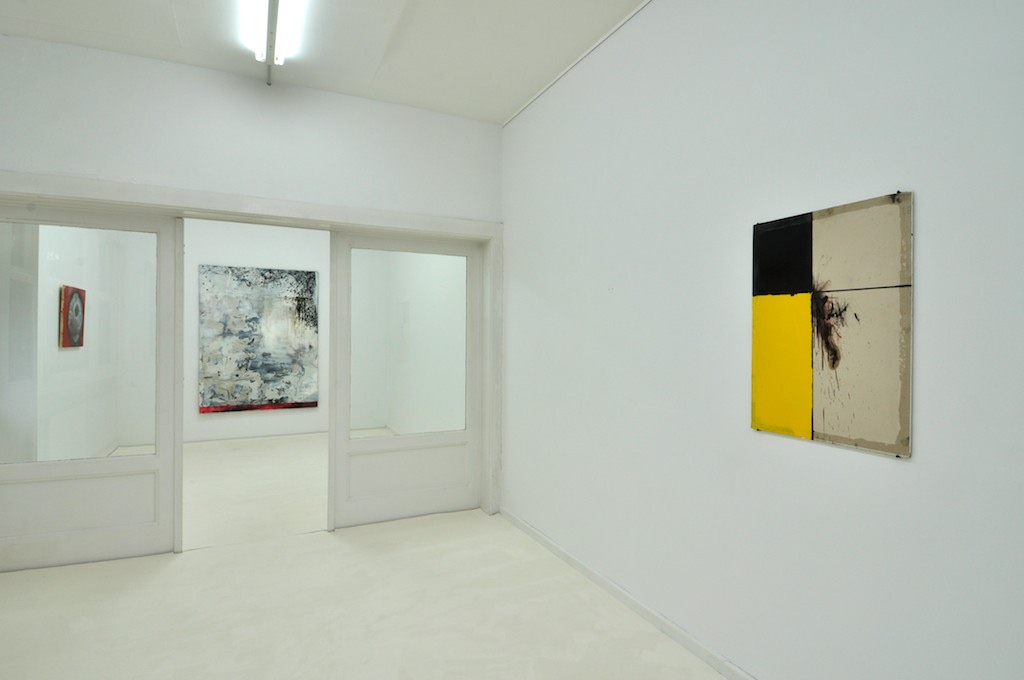zandpoortvest 10
be 2800 mechelen
t +32 15 336 336
m (b) +32 478 811 441
m (d) +32 475 477 478
Arne Bastien
Het werk van Arne Bastien toont een vijandige houding ten aanzien van het beeld. In zijn schilderijen is het onderwerp altijd een spanningsveld, een activiteit, een storing of een splitsing. De blik wordt door deze storingen in beweging gebracht. Door op verschillende punten scherp te stellen, door compositorische splitsingen en een soms trage dan weer ritmische, nerveuze penseelvoering, wordt het onmogelijk het werk terug te brengen tot een beheersbaar, consumeerbaar beeld. De grijpende blik wordt afgelegd en een bindend kijken neemt over.
Het onaffe, de twijfel, het brutale zoeken en een intelligente weerstand tegen de reducerende werking van beelden, produceren een uitermate boeiend en noodzakelijk heterogeen oeuvre.
Vincent Geyskens, 2019
Antwerp Art Weekend 16 - 19 mei 2019 in Antwerp Art paviljoen @ MAS museum
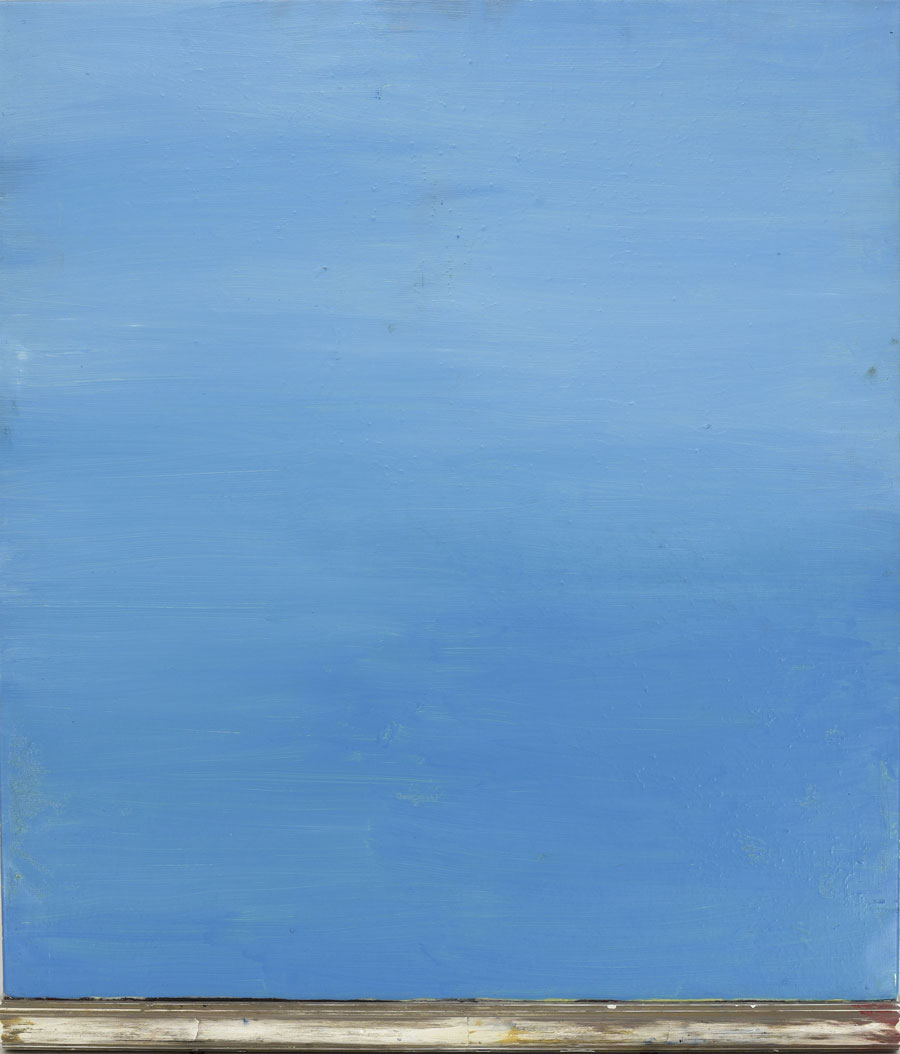
Moulure, 2016, oilpaint and moulding on canvas, 140 x 120 x 7 cm
AKT 1 - 6 , new paintings 2019, 185 x 50 cm, mixed media on canvas [nr 4 on unalit]
Public Spirit | 11.11 - 16.12.2018 | galerie Transit Mechelen
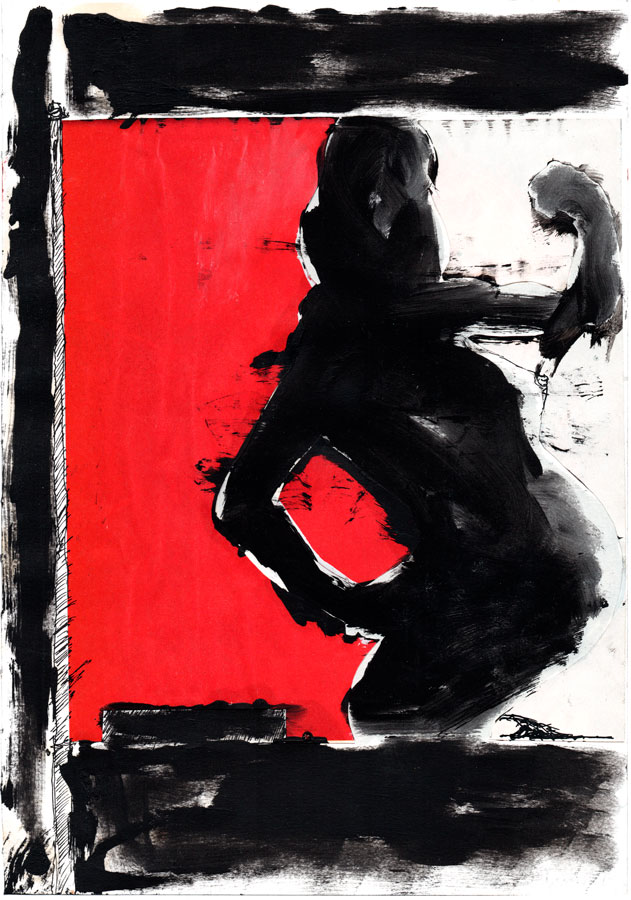
Untitled (Vlag I), 2017, ink & collage on paper, 29,7 x 21cm, private collection
Voor zijn derde solotentoonstelling in galerie Transit onwikkelde Arne Bastien (ºEeklo, 1989) een verrassend kunstenaarsboek 'TERRAIN VAGUE NR. 2'.
De presentatie van het boek wordt in de tentoonstelling een visueel element dat in dialoog gaat met een nieuwe reeks schilderijen en tekeningen.
Sabine Alexander schreef in 2016 in Kunsttijdschrift Vlaanderen volgende commentaar bij zijn werk: 'Het werk van Arne Bastien beweegt zich tussen abstractie en figuratie, tussen de tastbare en onstoffelijke werkelijkheid die gestold wordt in vele tactiele lagen verf. De kunstenaar werkt op doek, paneel of ander materiaal dat hem bruikbaar lijkt en dat hij na een eerste 'worp' voortdurend bijwerkt, aanpast of overschildert.
Arne Bastien brengt de verf aan in opeenvolgende lagen die verzadigd zijn van materie en kleur. Niet enkel olieverf, maar ook industriële lak en verf uit de spuitbus kunnen hiervoor dienen, als de materialiteit van het medium maar zichtbaar blijft. De kunstenaar geeft de indruk zijn parcours eigenmachtig uit te stippelen, zonder zich veel aan voorgangers en voorbeelden te spiegelen. "Kunst moet persoonlijk zijn en moet radicaal omgaan met de dingen", zegt Bastien. Hij spreekt zacht en omzichtig, bedenkt dat hij nog niet vaak zijn kunst heeft moeten verwoorden. "Je schildert soms dingen zonder dat je erbij stilstaat waarom je ze schildert, pas nadien komt de reflectie, net zoals de titels ook vaak later ontstaan".
De nonchalance waarmee Bastiens werken gemaakt lijken is slechts schijn. Ze zijn het resultaat van een complex gedachte- en schilderparcours.'
Deze tekstfragmenten zijn in 2018 nog steeds toepasbaar op zijn werk en bevestigen zijn heel persoonlijke aanpak van het medium schilderkunst.
KLIK HIER VOOR FOTO'S VAN DE TENTOONSTELLING
The work of Arne Bastien (ºEeklo, Belgium, 1989) hovers between abstraction and figuration, between a tangible and intangible reality solidified in many tactile layers of paint. The artist works on canvas, panel, or any other material that seems useful, which he, after executing an initial 'go', constantly reworks, adjusts or overpaints.
It is a long process, one that sometimes takes years, before the work takes its final form. His creativity comes in bouts. In the 'quiet' periods, the painter draws a lot, tries things out on paper.
Arne Bastien applies the paint in successive layers that are saturated with matter and color. Not only oil, but also industrial varnish and spray-paint can serve this purpose, as long as the materiality of the medium remains visible. The artist gives the impression to follow his own individual course, without emulating predecessors or examples. "Art should be personal and deal with things in a radical manner," says Bastien. He speaks softly and cautiously, realizing that he hasn't been obliged to explain his art all that much. "Sometimes you paint things without thinking about why you paint them, the reflection comes later, just like the titles which often come about later as well." 'The painting as ornament and display of power' is a phenomenon that holds the artist's attention.
Black was predominantly present in Bastien's work of a few years ago. Today, the artist uses a rather striking color palette with a fascinating texture. The relations both within a work and between different works is also something the artist finds intriguing. The nonchalance which Bastien's works seems to evince is but an illusion. His works are the result of a complex mental and painterly journey. [With thanks to Sabine Alexander for the text excerpts]
CLICK HERE FOR IMAGES OF THE EXHIBITION
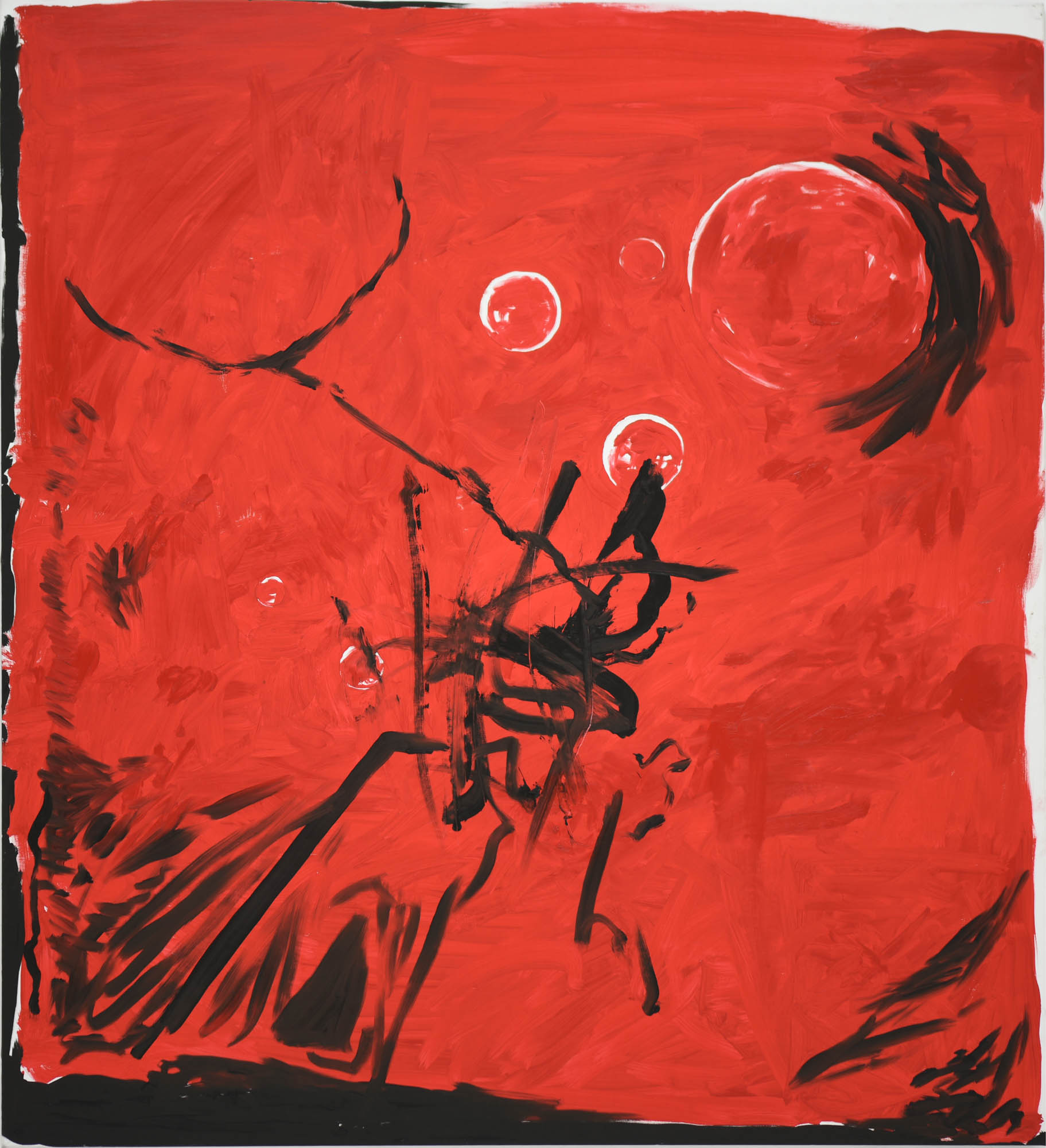
Inevitability of Death, 2018, oilpaint on canvas, 131 x 118 cm
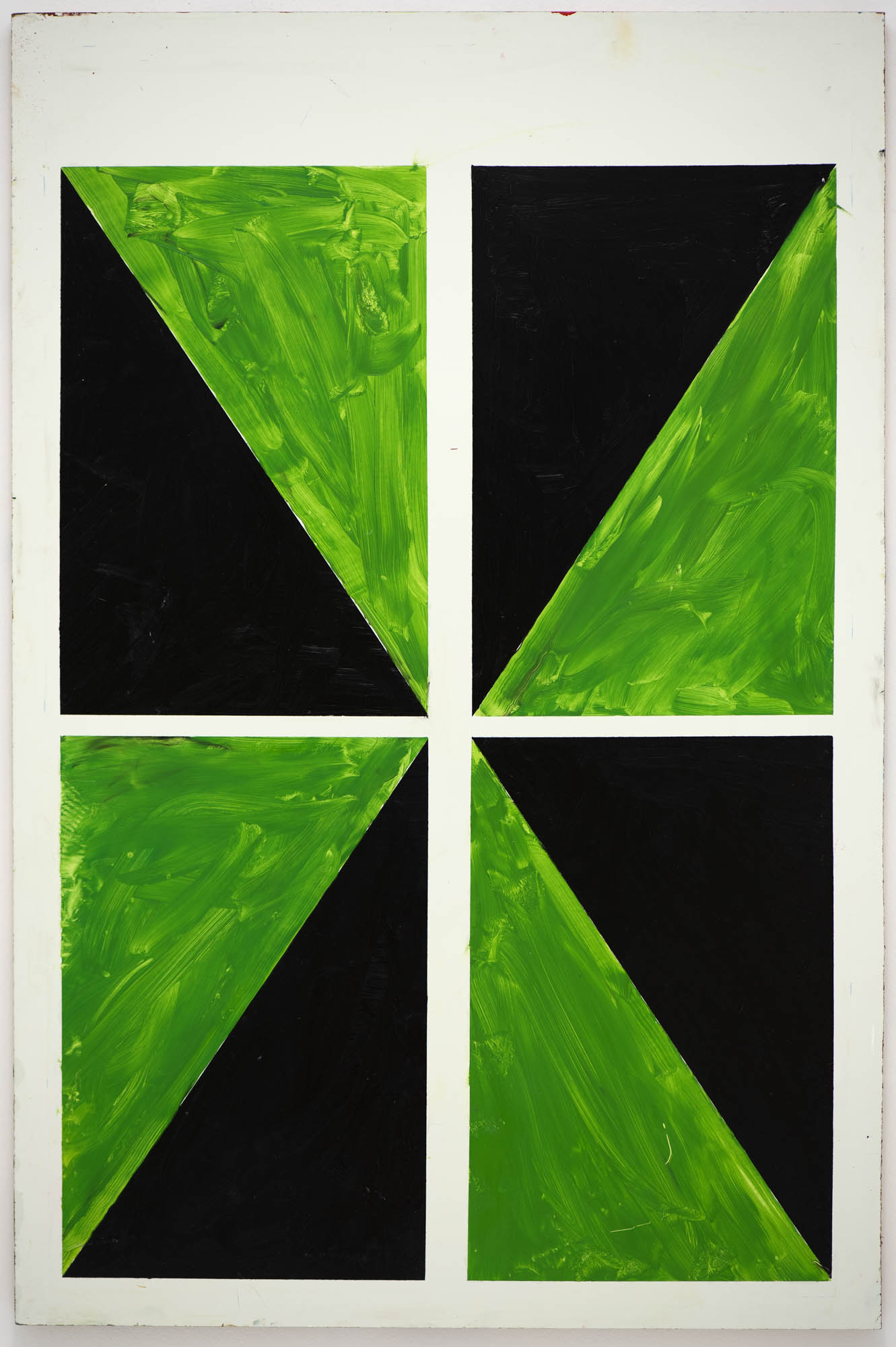
Untitled, 2017, oilpaint on unalit. 122 x 81 cm

Artist book TERRAIN VAGUE NR. 2
Art Brussels 2017
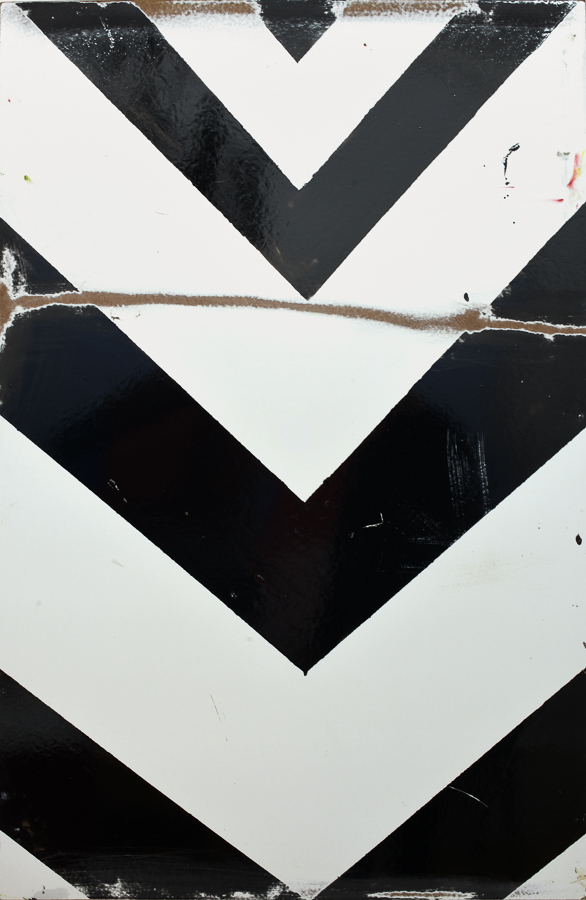 z.t., oilpaint and enamel on unalit, 122 x 81 cm, 2017, private collection
z.t., oilpaint and enamel on unalit, 122 x 81 cm, 2017, private collection
 z.t., oilpaint and enamel on unalit, 122 x 81 cm, 2017
z.t., oilpaint and enamel on unalit, 122 x 81 cm, 2017
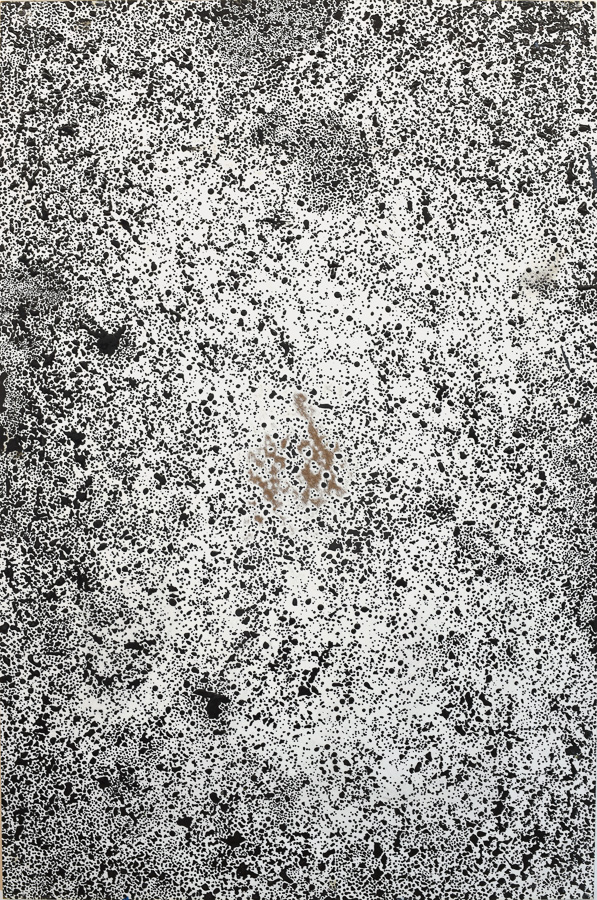 z.t., oilpaint and enamel on unalit, 122 x 81 cm, 2017
z.t., oilpaint and enamel on unalit, 122 x 81 cm, 2017
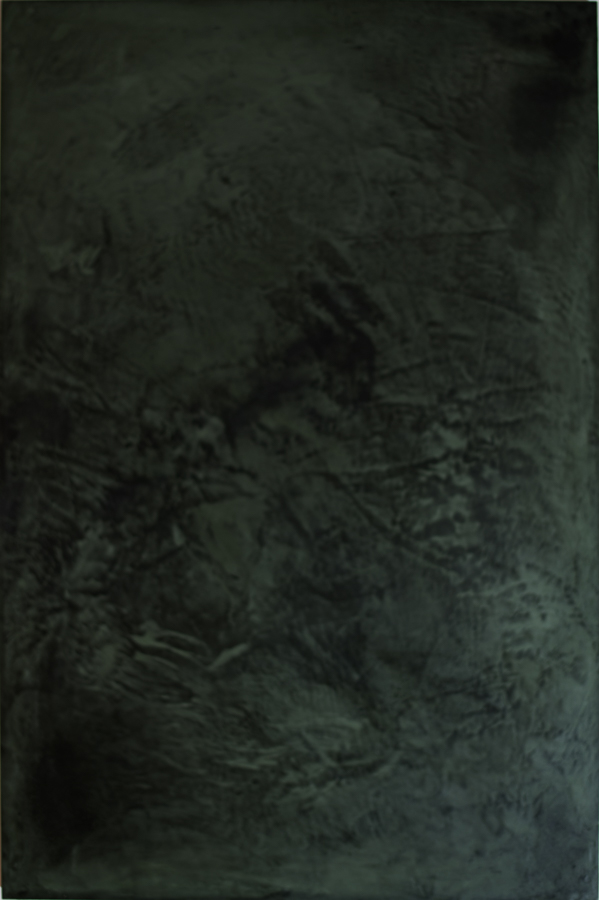 z.t., tadelakt on MDF, 122 x 81 cm, 2017
z.t., tadelakt on MDF, 122 x 81 cm, 2017
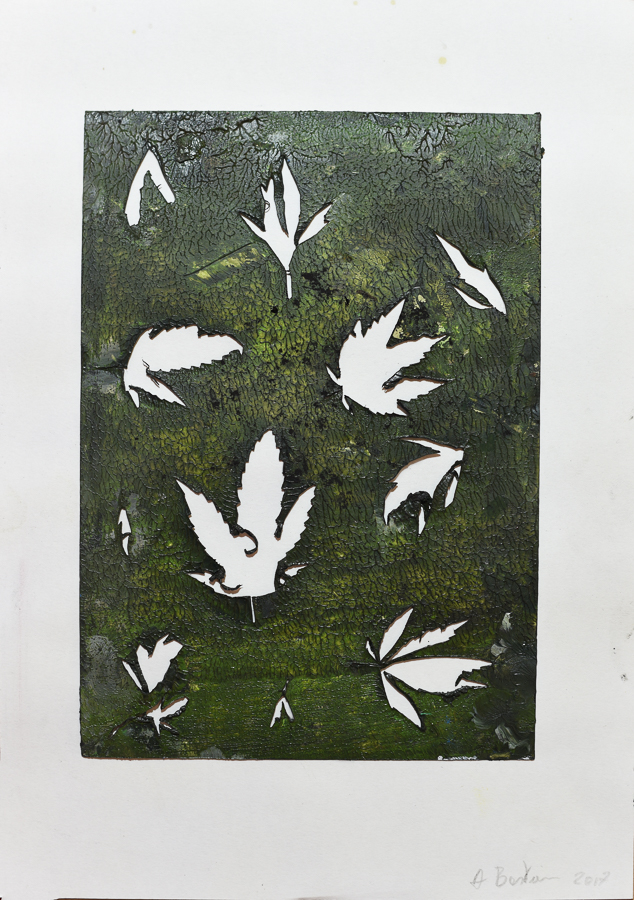 z.t., oilpaint on invitation card 'Empire', 29,7 x 21 cm, 2017
z.t., oilpaint on invitation card 'Empire', 29,7 x 21 cm, 2017
Arne Bastien | Empire | galerie Transit 28.08 - 25.09.2016
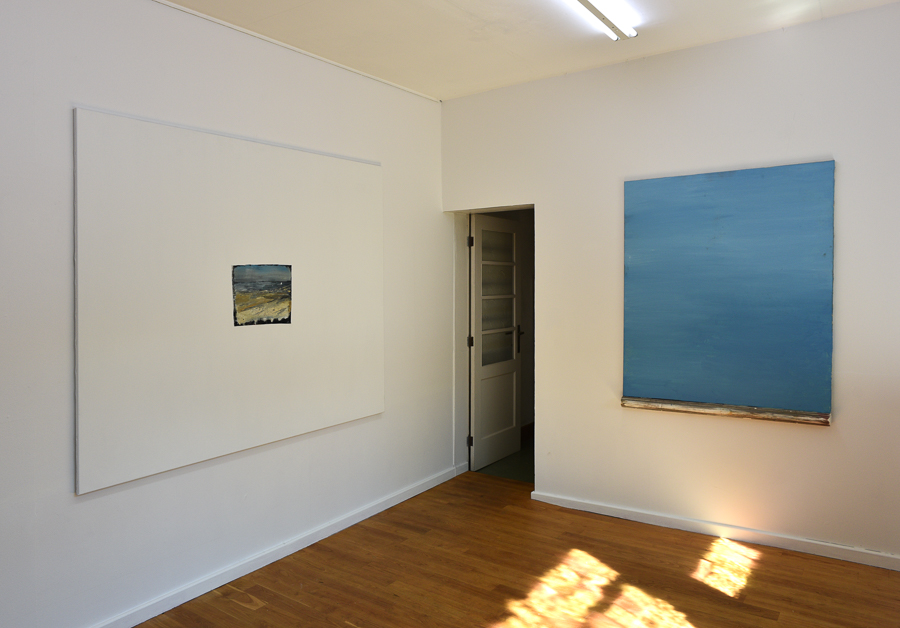
for english scroll down
Het werk van Arne Bastien (ºEeklo, 1989) beweegt zich tussen abstractie en figuratie, tussen de tastbare en onstoffelijke werkelijkheid die gestold wordt in vele tactiele lagen verf. De kunstenaar werkt op doek, paneel of ander materiaal dat hem bruikbaar lijkt en dat hij na een eerste 'worp' voortdurend bijwerkt, aanpast of overschildert.
Het is een lang proces, soms van jaren, alvorens een werk zijn definitieve vorm krijgt. De creativiteit komt met vlagen. In de 'stille' periodes tekent de schilder veel, zet hij probeersels op papier. Sommige van die 'losse spelingen' heeft hij in comic storage bags geborgen en op een houten bord bijeengebracht.
Arne Bastien brengt de verf aan in opeenvolgende lagen die verzadigd zijn van materie en kleur. Niet enkel olieverf, maar ook industriële lak en verf uit de spuitbus kunnen hiervoor dienen, als de materialiteit van het medium maar zichtbaar blijft. De jonge kunstenaar geeft de indruk zijn parcours eigenmachtig uit te stippelen, zonder zich veel aan voorgangers en voorbeelden te spiegelen. "Kunst moet persoonlijk zijn en moet radicaal omgaan met de dingen", zegt Bastien. Hij spreekt zacht en omzichtig, bedenkt dat hij nog niet vaak zijn kunst heeft moeten verwoorden. "Je schildert soms dingen zonder dat je erbij stilstaat waarom je ze schildert, pas nadien komt de reflectie, net zoals de titels ook vaak later ontstaan". 'Het schilderij als ornament en machtsvertoon' is een fenomeen dat de jonge kunstenaar bezighoudt.
Ook speelt er een rebel in Bastien. Een glanzend groen monochroom doek met een wit vlakje in het midden, waarop een plastic zakje met een portie wiet bevestigd is, is uitgemond in een stil protest. "Dit werk kan niet verkocht worden, want dat zou onder het illegaal verhandelen van drugs vallen" constateert Bastien. Op die manier blijft het de transfer naar een plaats boven buffet of canapé alvast bespaard.
Zwart was overwegend aanwezig in Bastiens werk van een paar jaar geleden. Vandaag bedient de kunstenaar zich eerder van een opvallend kleurenpalet met een boeiende textuur. Ook de verhoudingen binnen een werk en tussen werken onderling intrigeren de kunstenaar. Zo heeft hij drie grote witte doeken met telkens centraal een klein, precieus en kleurrijk zeelandschap, opgebouwd uit vele verflagen op een ondergrond in hoogglanslak en bijna onopvallend gedeeld door een diagonale lijn. De nonchalance waarmee Bastiens werken gemaakt lijken is slechts schijn. Ze zijn het resultaat van een complex gedachte- en schilderparcours.
[Met dank aan Sabine Alexander voor de tekstfragmenten, lees de volledige tekst hier]

ENGLISH:
The work of Arne Bastien (b. Eeklo - Belgium, 1989) hovers between abstraction and figuration, between a tangible and intangible reality solidified in many tactile layers of paint. The artist works on canvas, panel, or any other material that seems useful, which he, after executing an initial 'go', constantly reworks, adjusts or overpaints.
It is a long process, one that sometimes takes years, before the work takes its final form. His creativity comes in bouts. In the 'quiet' periods, the painter draws a lot, tries things out on paper. He has placed some of those 'loose shots' in comic storage bags and assembled them on a wooden board.
Arne Bastien applies the paint in successive layers that are saturated with matter and color. Not only oil, but also industrial varnish and spray-paint can serve this purpose, as long as the materiality of the medium remains visible. The young artist gives the impression to follow his own individual course, without emulating predecessors or examples. "Art should be personal and deal with things in a radical manner," says Bastien. He speaks softly and cautiously, realizing that he hasn't been obliged to explain his art all that much. "Sometimes you paint things without thinking about why you paint them, the reflection comes later, just like the titles which often come about later as well." 'The painting as ornament and display of power' is a phenomenon that holds the young artist's attention.
There is a rebel in Bastien. A shiny green monochrome canvas with a white field in the center, on which is mounted a plastic bag with some weed in it, has culminated in a silent protest. "This work cannot be sold, because that would fall under the illegal trafficking of drugs regulation," states Bastien. That way, it is at least spared the journey to a spot above a buffet or settee.
Black was predominantly present in Bastien's work of a few years ago. Today, the artist uses a rather striking color palette with a fascinating texture. The relations both within a work and between different works is also something the artist finds intriguing. In this way, he has painted three large white canvases, each with a central small, meticulous, and colorful maritime landscape, made up of many layers of paint on a glossy base and almost inconspicuously divided by a diagonal line. The nonchalance which Bastien's works seems to evince is but an illusion. His works are the result of a complex mental and painterly journey. [With thanks to Sabine Alexander for the text excerpts]
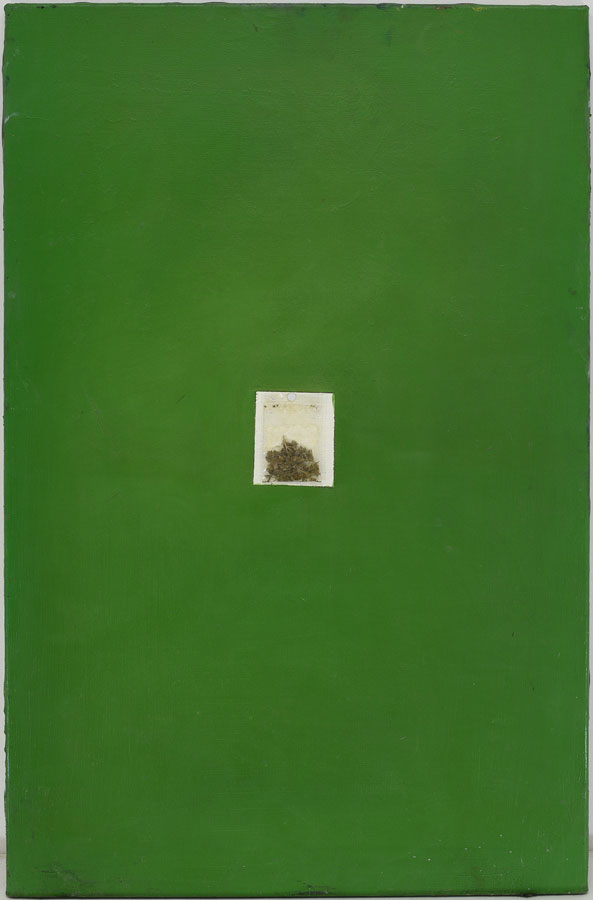 Ornamenteel voorstel, 2014, oilpaint & cannabis in plastic bag on canvas, 116 x 76 x 4 cm
Ornamenteel voorstel, 2014, oilpaint & cannabis in plastic bag on canvas, 116 x 76 x 4 cm
 Z.t., 2016, oil & spray paint on wood, 110 x 79 x 5 cm
Z.t., 2016, oil & spray paint on wood, 110 x 79 x 5 cm
Arne Bastien | Haifisch | 11.05 - 15.06.2014
Schilderkunstig oeuvre ontstaat vaak vanuit een zekere vorm van contaminatie.
Een eerste voorbeeld is een vorm van ‘intellectuele contaminatie’, gaande van alles dat het subject beïnvloedt om tot een bepaalde vorm te komen, daar inhoud aan te geven, en die vorm te behouden.
Een tweede vorm van ‘fysieke contaminatie’, vertrekkende vanuit het handelen met verf, heeft te maken heeft met de fysieke eigenschappen van het medium.
Het is belangrijk dat deze twee vormen onlosmakelijk met elkaar verweven zijn. De tekens die zich binnen de interne logica van één werk manifesteren worden in de samenkomst van verschillende werken aangevuld en dragen bij aan het ontstaan van een nieuw geheel.
Tentoonstelling 11 mei - 15 juni 2014.
Opening in aanwezigheid van de kunstenaar: zondag 11 mei, 15 - 18 u, receptie Corsendonk bier.
Open: vrijdag, zaterdag en zondag 14 - 18u, of na afspraak.
English:
Arne Bastien [°Eeklo, 1989] presents a selection of new paintings. He himself writes about it: “Painterly work often arises from some form of contamination. A first example is a form of ‘intellectual contamination’, which includes everything that affects the subject in their strive to create a particular form, infuse it with meaning, and retain it.
A second form of ‘physical contamination', originating in the utilisation of paint, has to do with the physical properties of the medium.
It is important that these two forms be inextricably interwoven. The signs that manifest themselves within the internal logic of the work are complemented through the coming together of various works and contribute to the emergence of a new whole.”
Works
[Georges & André] Boyaux, 2014, oil paint on canvas, 176 x 120 cm

P-40, 190 x 190 cm, 2013, olieverf en hoogglanslak op doek
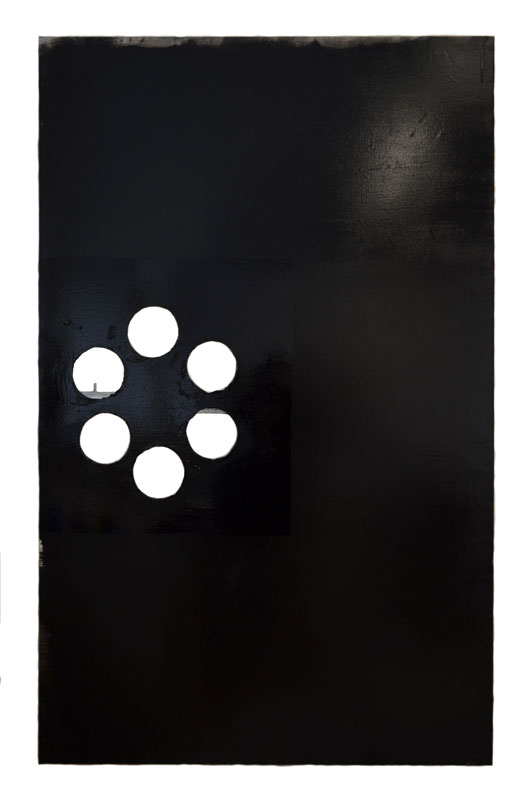
113mm, 160 x 110 cm, 2013, hoogglanslak op doek
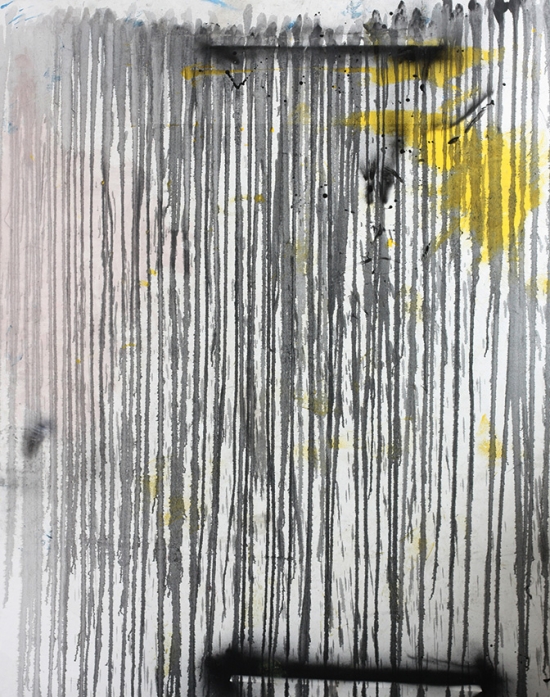
Bring Da Ruckus, 200 x 160cm, 2012, olieverf, spuitbus, hoogglans lak op doek

Zondert titel, 130 x 150 cm, 2013, olieverf en hoogglanslak op doek
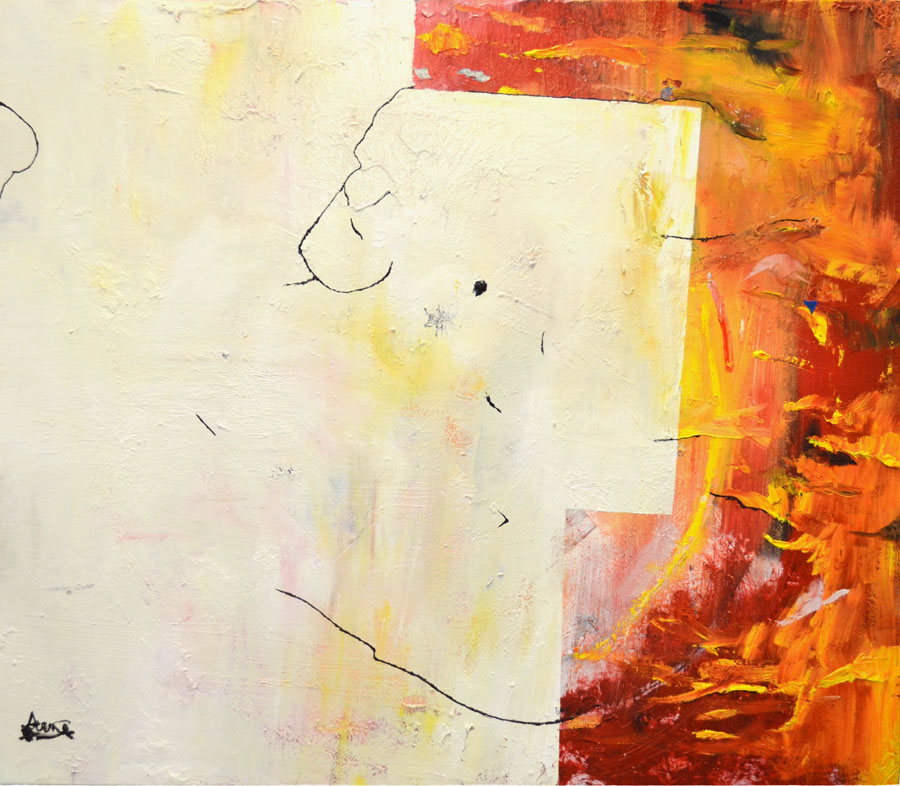
Inno, 120 x 140 cm, 2013, olieverf en tape op doek
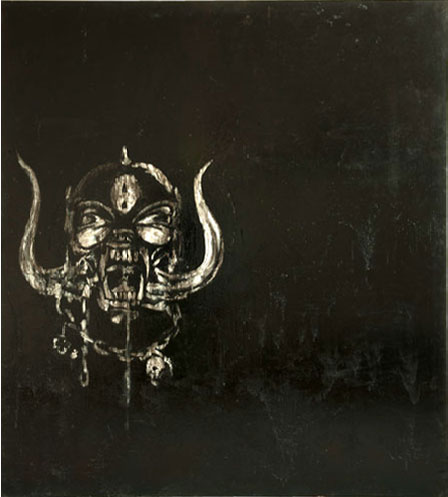
Say Who? Be What? [Motorhead], 200 x 180 cm, 2013, olieverf en hoogglanslak op doek

White Spirit, mixed media on canvas, 2013, private verzameling

Zonder titel, 75 x 64 cm, 2013, olieverf op doek
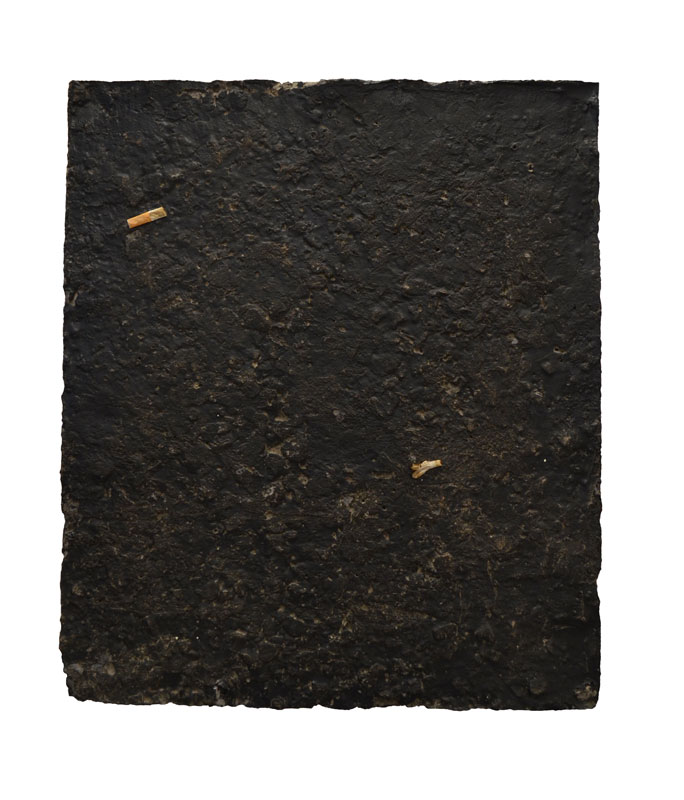
Zonder titel [Asfalt}, 70 x 60 cm, 2014, peuken en asfalt op vuurvaste plaat






